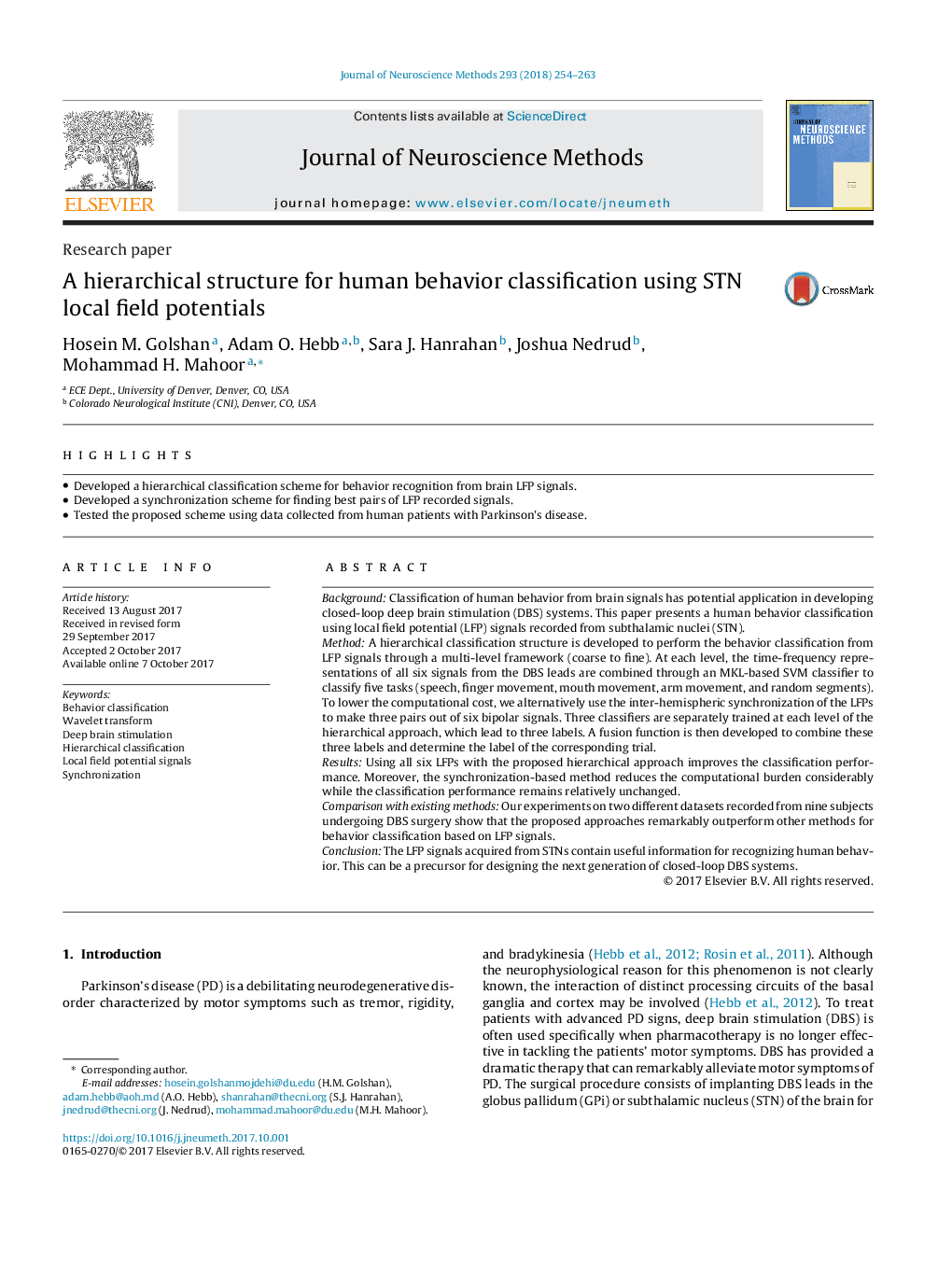| کد مقاله | کد نشریه | سال انتشار | مقاله انگلیسی | نسخه تمام متن |
|---|---|---|---|---|
| 5737119 | 1614576 | 2018 | 10 صفحه PDF | دانلود رایگان |

- Developed a hierarchical classification scheme for behavior recognition from brain LFP signals.
- Developed a synchronization scheme for finding best pairs of LFP recorded signals.
- Tested the proposed scheme using data collected from human patients with Parkinson's disease.
BackgroundClassification of human behavior from brain signals has potential application in developing closed-loop deep brain stimulation (DBS) systems. This paper presents a human behavior classification using local field potential (LFP) signals recorded from subthalamic nuclei (STN).MethodA hierarchical classification structure is developed to perform the behavior classification from LFP signals through a multi-level framework (coarse to fine). At each level, the time-frequency representations of all six signals from the DBS leads are combined through an MKL-based SVM classifier to classify five tasks (speech, finger movement, mouth movement, arm movement, and random segments). To lower the computational cost, we alternatively use the inter-hemispheric synchronization of the LFPs to make three pairs out of six bipolar signals. Three classifiers are separately trained at each level of the hierarchical approach, which lead to three labels. A fusion function is then developed to combine these three labels and determine the label of the corresponding trial.ResultsUsing all six LFPs with the proposed hierarchical approach improves the classification performance. Moreover, the synchronization-based method reduces the computational burden considerably while the classification performance remains relatively unchanged.Comparison with existing methodsOur experiments on two different datasets recorded from nine subjects undergoing DBS surgery show that the proposed approaches remarkably outperform other methods for behavior classification based on LFP signals.ConclusionThe LFP signals acquired from STNs contain useful information for recognizing human behavior. This can be a precursor for designing the next generation of closed-loop DBS systems.
Journal: Journal of Neuroscience Methods - Volume 293, 1 January 2018, Pages 254-263